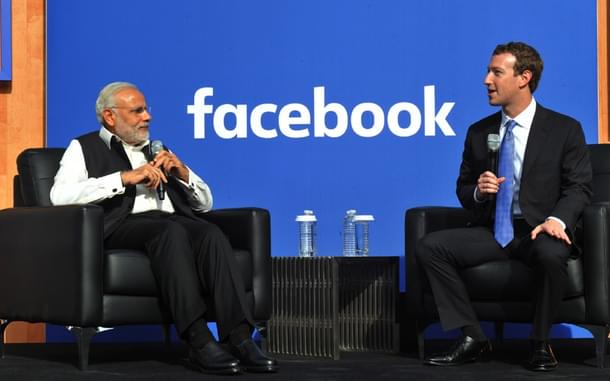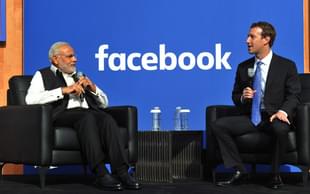Business
Are All These Startups Really Necessary, Prime Minister?
Rajeev Srinivasan
Oct 06, 2015, 07:07 PM | Updated Feb 24, 2016, 04:27 PM IST
Save & read from anywhere!
Bookmark stories for easy access on any device or the Swarajya app.


Some notes of caution for those enamored by the current mania for ‘entrepreneurship’: lack of real fundamental research in India and absence of accountability.
Prime Minister Modi has talked a lot about #StartupIndia – and he has a point. There are two different angles: overseas Indians (just like overseas Chinese) are highly entrepreneurial. They have built up their lives, and fortunes, in foreign lands through the traditional Asian values of hard work, respect for education, and creation of social capital. Unfortunately, this entrepreneurial ferment is notably absent in India – and this must have come across powerfully to the PM when he encountered Indian success stories in Silicon Valley lately.
Except for brief periods – perhaps one coincided with NDA 1.0 – the creation of new companies has not been a priority in India. The business model pursued in India, in keeping with the dirigiste policies of the late lamented Mahalanobis and his acolytes, was one of absolute, deadening state control. Generations of young people have looked to the government to create jobs for them. There has been little private-sector job-creation, partly because of restrictive labor laws and other distortions.
Thus it stands to reason that hotspots for innovation would appeal to the PM, as a way of releasing the ‘animal spirits’ in the population and presumably creating value. But as much as I hate to rain on this parade, I sound a few of notes of caution. One relates to the difficulty in replicating the factors that make Silicon Valley such a cradle of Schumpeterian ‘creative destruction’.
The second relates to the very model of innovation and entrepreneurship and whether the American model is universal or not. The third is based on the unfortunate experiences of a few startup efforts in the recent past, as well as some of the unintended consequences thereof.
It is pretty well known that the endowment of Silicon Valley is hard to copy, especially the outstanding research universities and the pots of venture capital cash; so I won’t dwell on that. The question of the model of innovation has not been considered in detail – it is assumed that what works in Silicon Valley can be exported elsewhere. And if it doesn’t work, it is only a matter of tweaking a couple of factors until it all comes together. But that’s not quite true, as the many unsuccessful efforts around the world have shown – there seems to be something more profound and deep at work.
There is a certain American vanity about universalism – often engendered by their soft power, which has made many of their memes the signatures of modernity and youth everywhere. Blue jeans, Hollywood, iPhones, and so forth. But there is an interesting question as to whether these, their underlying commercialism, or even Americans’ boundless optimism based on exploiting the natural abundance of their wide-open country, are reusable elsewhere.
The converse of this, of course, is the idea of ‘American exceptionalism’, that theirs is a singularly unique nation. These two threads are in constant conflict and contrast, and maybe the tension between them is a source of new ideas.
I suggest that, similarly, there is a ‘Hindu exceptionalism’. If you prefer, you could call it an ‘Indian exceptionalism’ or even a ‘dharmic exceptionalism’ depending on your point of view. I say that because there are profound differences between the two countries, if you delve a little bit deeper beyond the standard clichés of ‘largest democracy’ and ‘oldest democracy’ and so forth. Not that there aren’t many similarities, but there are huge differences, too.
It may well be in India’s tendency to seek form, but not substance, or to be seduced by superficialities. For instance, Indian ‘democracy’ has form, but not substance – under the Congress, it was mostly window dressing superimposed on a hereditary, feudal setup: an observer, Patrick French, noted that almost 100% of young Congress MPs were offspring of some dynasty. Potemkin nation, I used to call that: a façade for a disappointing reality.
In somewhat the same way, we may have been seduced by the idea of startups, angel funding, young people coming up with earth-shaking ideas, and other such celebrated memes. As a result, a fair amount of government funding (and governments must spend, no quarrel there) has gone into efforts to create ‘incubators’ and ‘accelerators’, where young people with ideas were given the opportunity to nurture their tender companies to success.
What is wrong with this picture? First, the assumption that youngsters would come up with earth-shaking ideas. Second, it ended up being a real-estate play, with public money being transferred to unviable private enterprises in an unproductive way. Third, as is usual in India, just mouthing slogans like ‘job-creation’ and ‘inclusive growth’ are enough to silence critics, even if you don’t create things that people want to buy.
The first issue is the most vexed. Yes, it is true that an occasional startup company in, say, Silicon Valley, has astonished the world with their innovative ideas, and created true value. All of us know the examples: Apple, Google, Facebook, or, in Seattle, Microsoft or Amazon. (Let me clarify in passing that Microsoft has never been a product innovator, but a business model innovator.) But if you consider where their ideas came from, in many cases they had support from ecosystems: for instance, Apple got many ideas from Xerox PARC; Google from Stanford and particular professors there, and so forth.
And that ecosystem is important. In some sense, when you fund a startup company, you are actually funding the professor or the lab that came up with the idea: I am indebted to my friend, and very successful entrepreneur, C Balagopal, for this insight. Professors or researchers are free to commercialize their ideas; and thus the grants from the government or private sector that funded their research end up indirectly creating jobs.

And since young professors spend half their waking hours writing research proposals and generally begging for money, there is a sense of urgency to produce some results. This American reality that only good results lead to tenure, promotion, and academic success, is more or less absent in India. This, combined with the fact that there is almost no real fundamental research being done in most universities in India, means that it is highly unlikely that professors or their young students will be able to come up with earth-shaking ideas. Not impossible, but unlikely. The mortality rate of startups in Silicon Valley is pretty close to 90%, so in India, it would seem that it will be closer to 99%.
That leads to the second problem: even though almost all the startups funded by the Indian public sector will fail, the incubated companies spend years occupying subsidized spaces. They don’t grow, their ideas quickly becomes obsolete, but they don’t know what else to do: so they just continue to squat on the space, and by using some political pressures, they know they can continue to sit there.
This leads to the third problem – there is no accountability, and it satisfies short-term-minded ministers and civil servants to point to the large amounts of money they have spent, and the large numbers of ‘companies’ they have ‘incubated’. The fact that this is completely meaningless does not matter.
Even more alarmingly, a large number of students from engineering colleges are now being seduced by the siren song of startups. This is the unintended consequence I referred to above. Consider a young 3rd year student who believes he has a brilliant idea. He gets into an incubator with relative ease and with relatively little due diligence, as the government is encouraging startups, and needs the numbers.
I was on a couple of small venture funds, and at least in those days a few years ago, we found it extremely difficult to get hold of good business plans: they just didn’t show up. So we were forced to fund borderline cases, just so that we could meet our targets to disburse funds. Not surprisingly, the results in terms of return on investment in these early-stage companies was not very good. So, over time, we gravitated towards funding entities that already were cash-generating, ie a private-equity perspective rather than true risk-capital.
Anyway, this means there is a buyer’s market for early-stage funding, especially from government seeding activities. So wholly unsuitable (especially in hindsight) companies get funded, and get space in an incubator. They limp along – but it also means that the student neglects his studies, and accumulates ‘back-papers’, until he just gives up.
Besides, the seductive glamor of being a ‘CEO’, pontificating about other drop-outs (Bill Gates and Mark Zuckerberg are popular role models), and having the relative and unaccustomed freedom of being in a government incubator mean that the student will never return and finish his degree. Now consider what happens when the money spigot is turned off, and he is finally forced to exit the incubator, and admit that his startup is dead.
He has no degree, no job, no prospects – he’s now a “12th-pass” who will not be able to aspire to the vast majority of advertised positions that generally require a degree. This situation is not theoretical. It has afflicted quite a few engineering students, and now that IT jobs are not so easily found, it may mean that they permanently join an unemployed underclass. This is a tragedy.
There are ways around this. I am currently helping build an incubator, and we are hoping to do proper due diligence, pursue business plans from people with actual experience, and to help them find customers by involving industry early on in the process. I am hoping this changed recipe will work better, but we will have to wait and see. And oh, we intend to force companies to exit with an inflexible deadline of 18 months, whether they succeed or fail – no point keeping zombie companies alive.
Thus, even though startups are the flavor of the month, I caution everyone about jumping into them willy-nilly. There is innovation, and then there is entrepreneurship. They are not synonymous. Unless you are sure you can innovate, you shouldn’t jump into entrepreneurship, especially in high-tech. The situation may be different in services such as in education or health care. But I would like to sound a small warning to both the PM: “Caveat emptor!”, and to entrepreneurs: Know what you are getting into”.
Rajeev Srinivasan focuses on strategy and innovation, which he worked on at Bell Labs and in Silicon Valley. He has taught innovation at several IIMs. An IIT Madras and Stanford Business School grad, he has also been a conservative columnist for twenty years.




